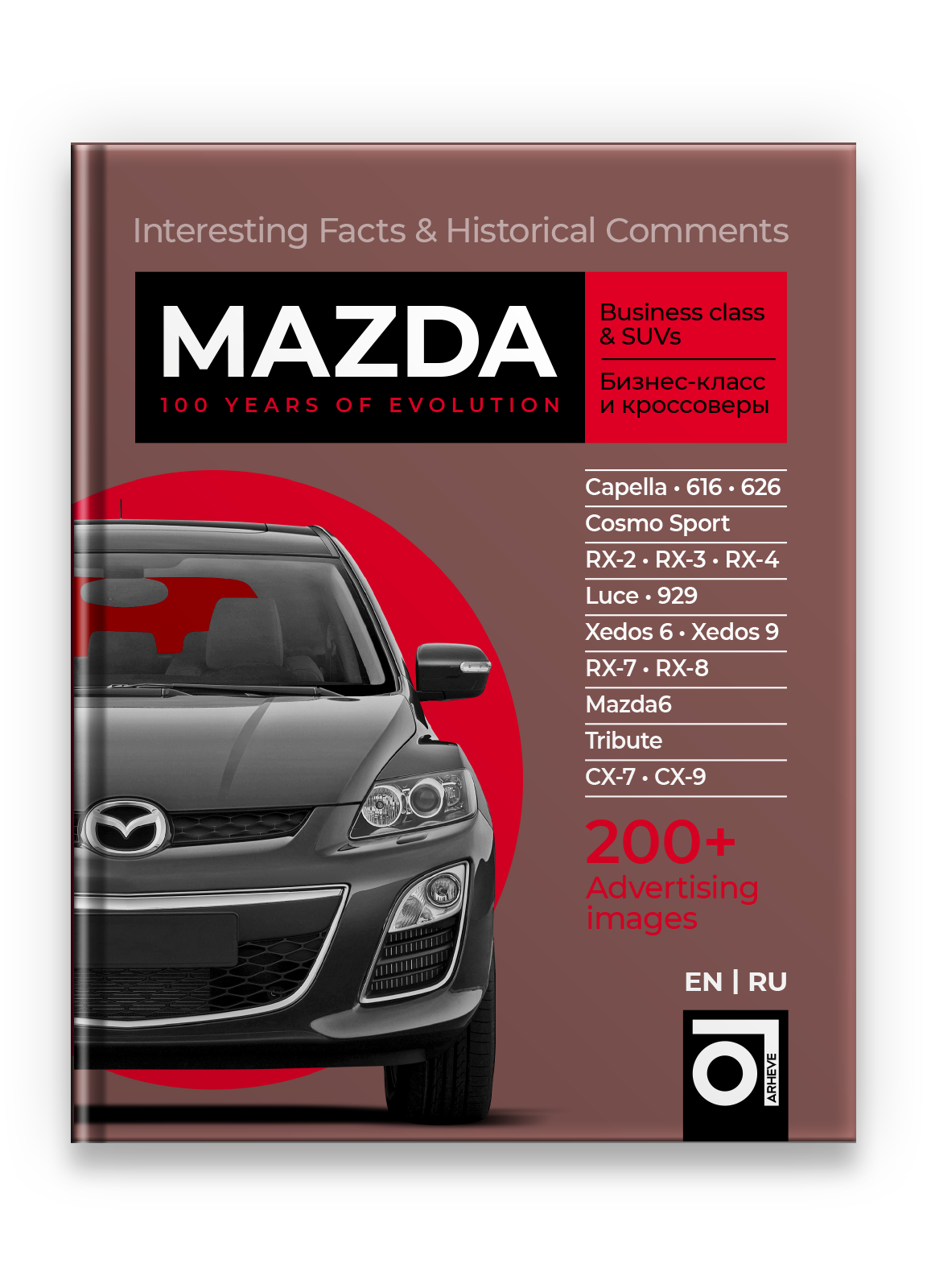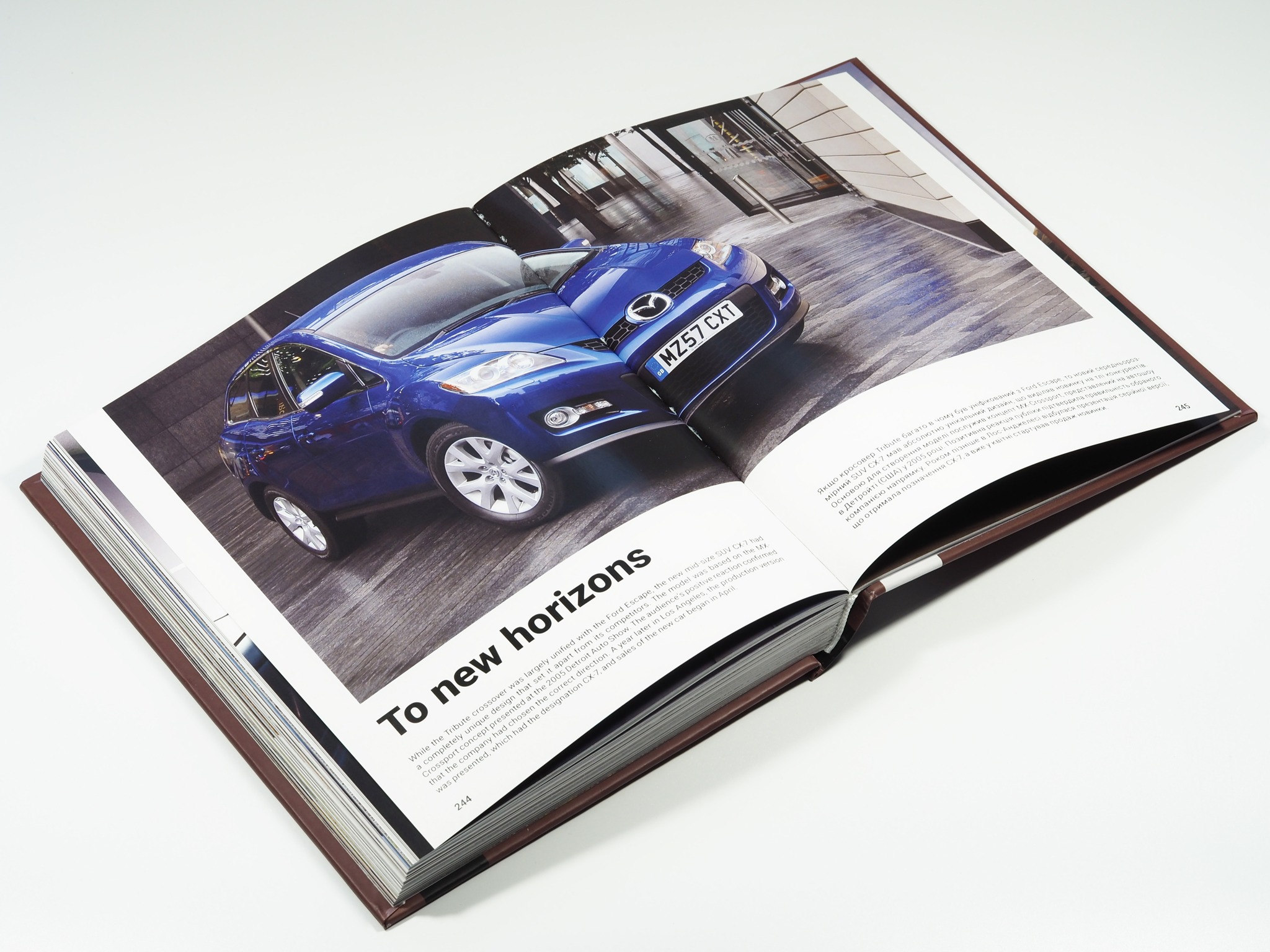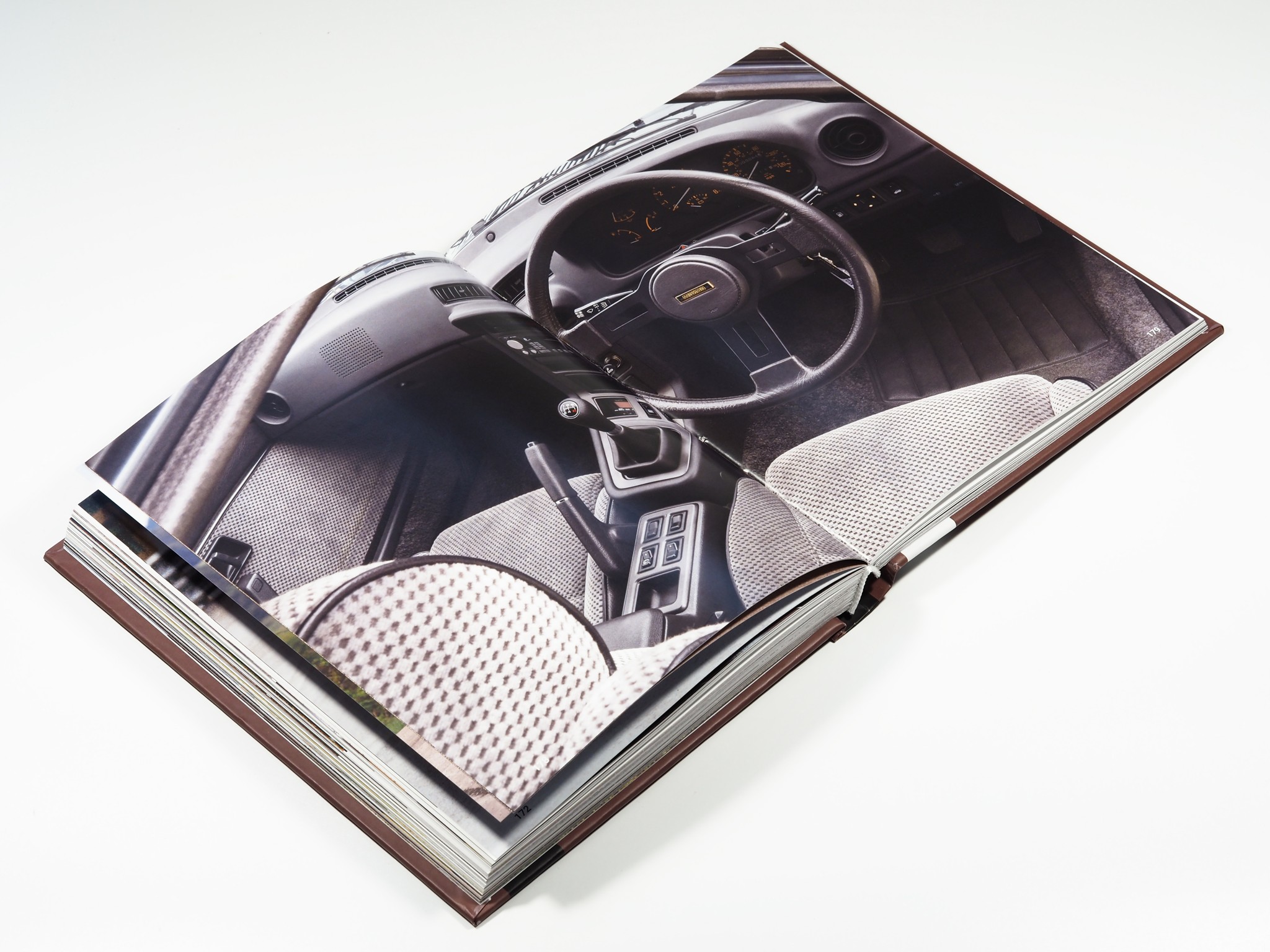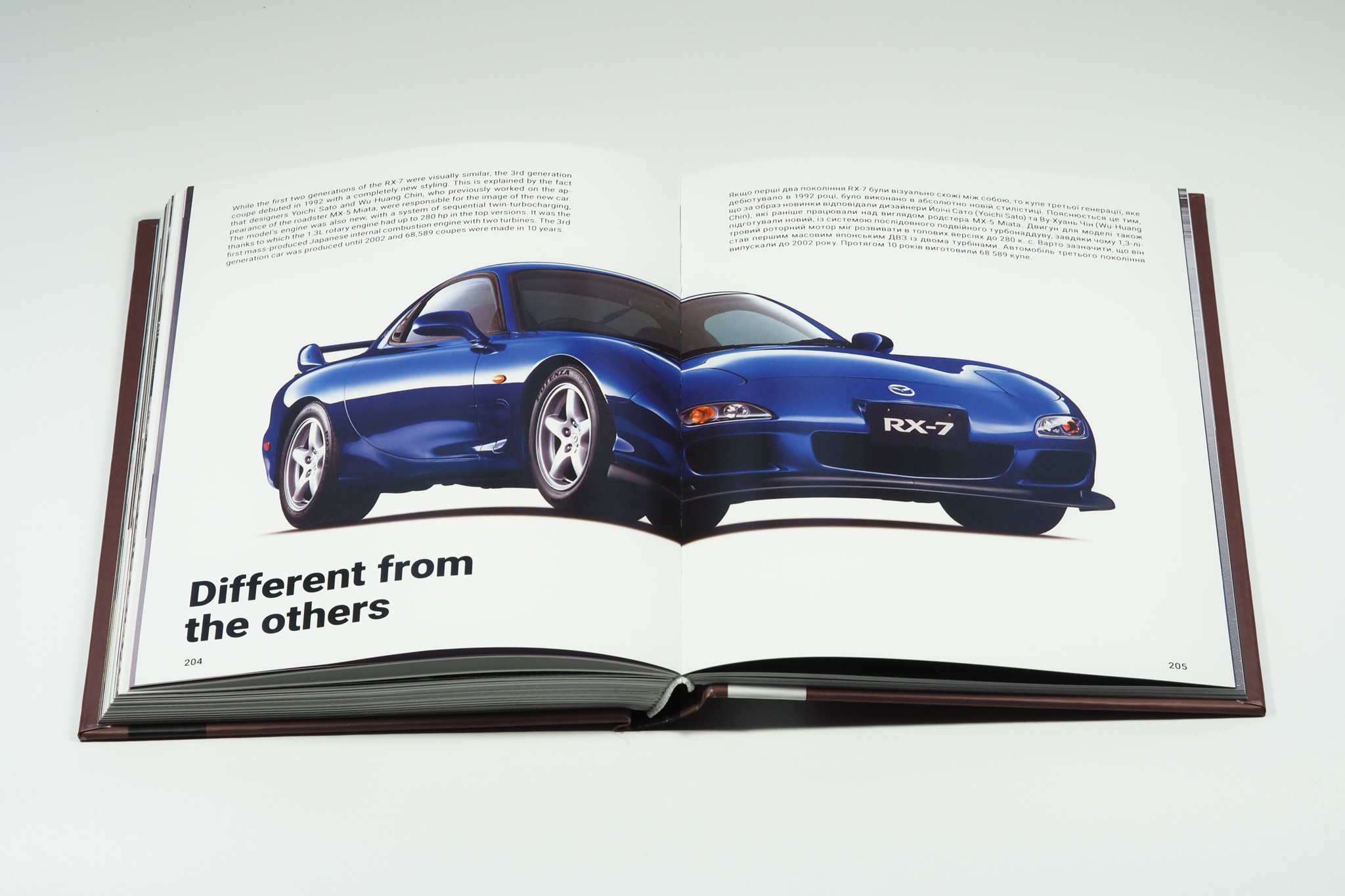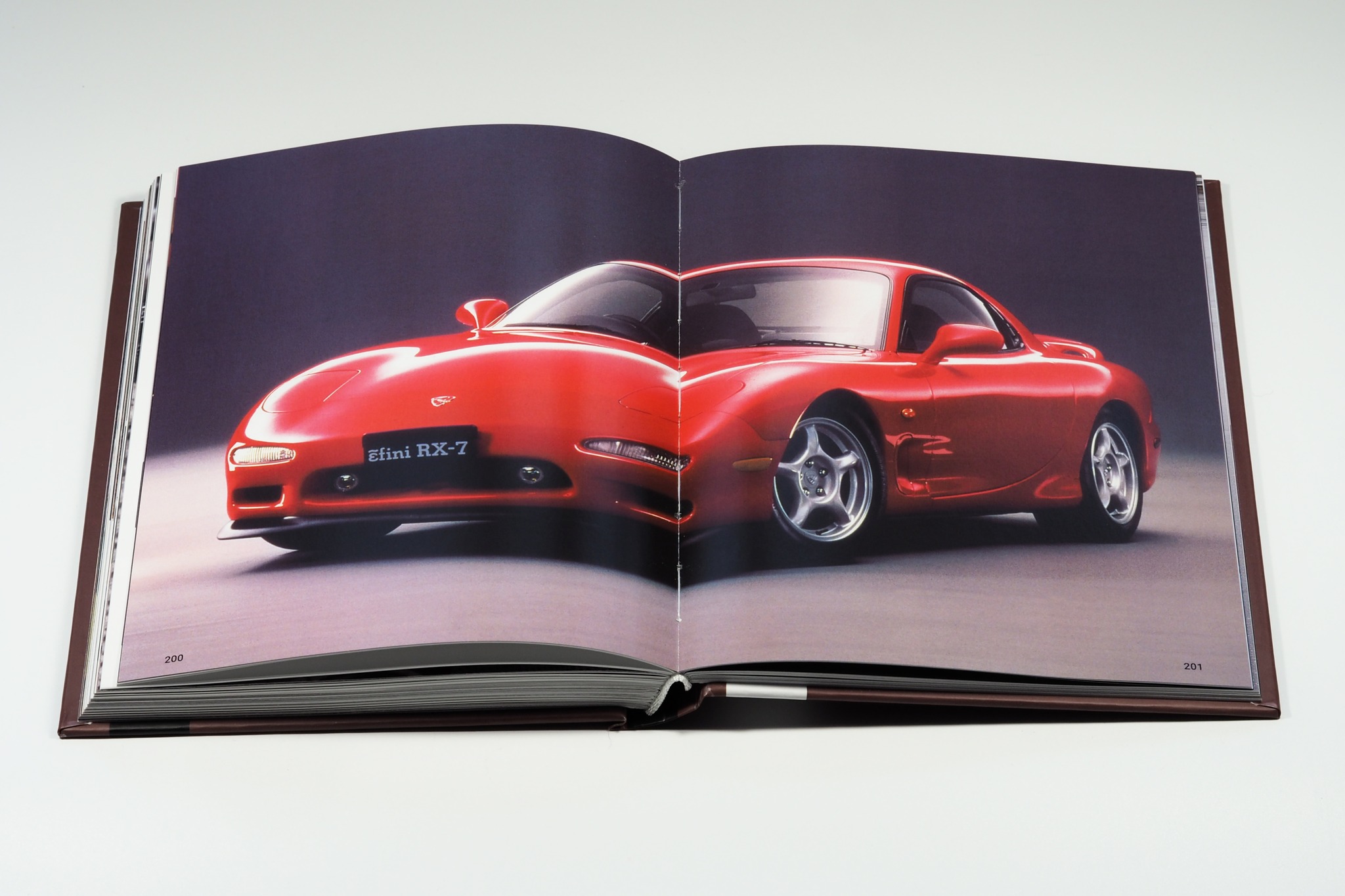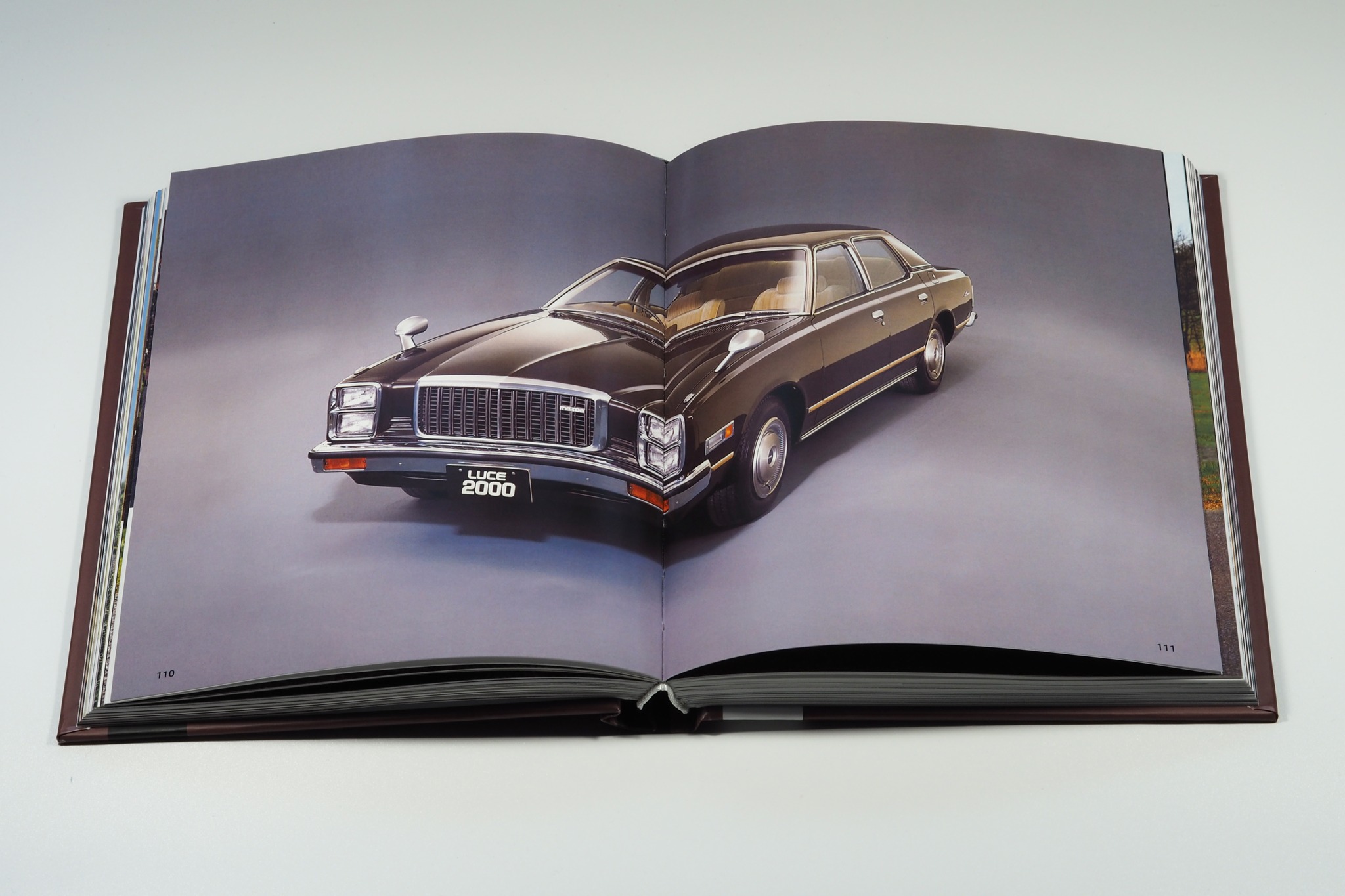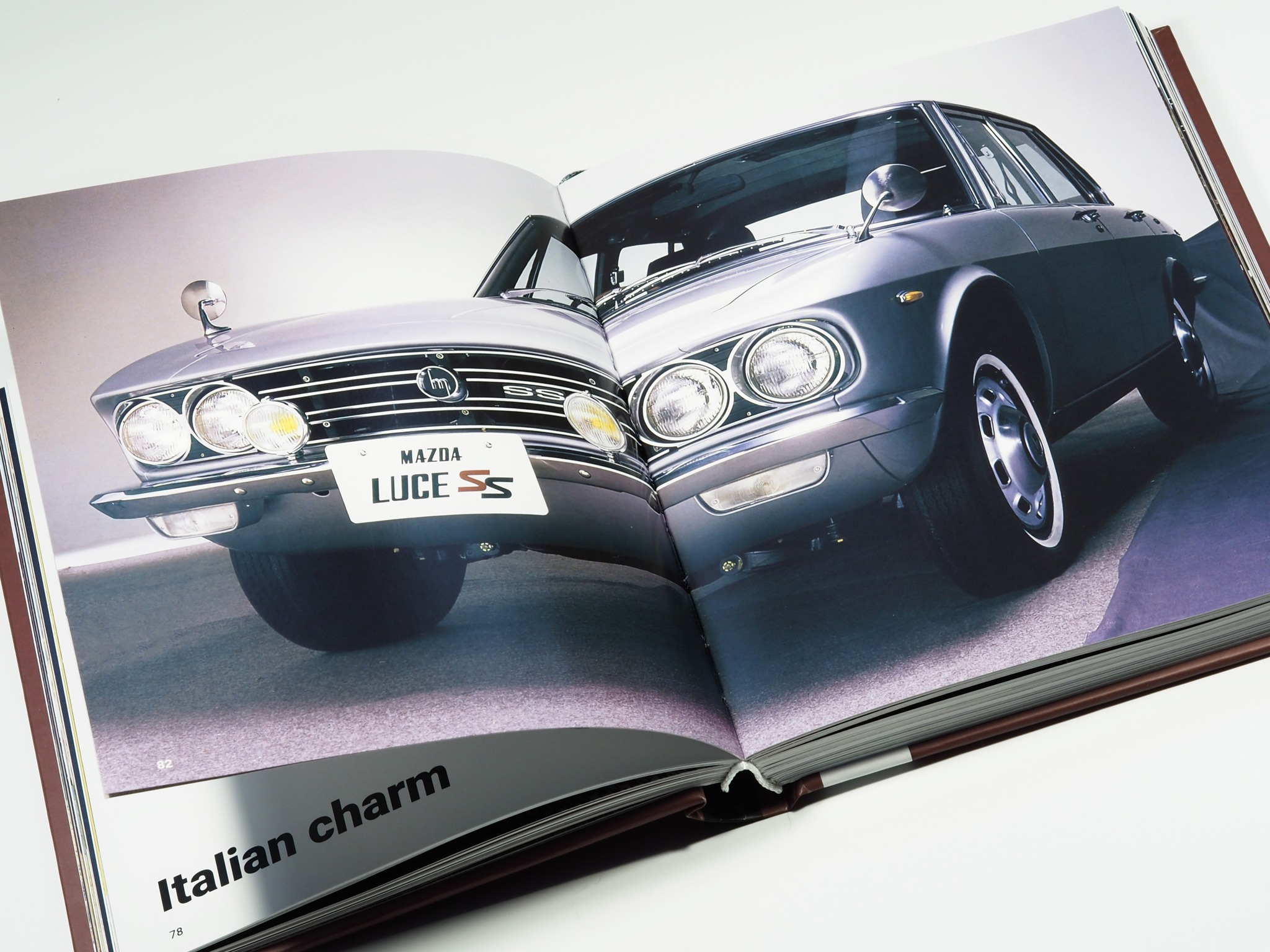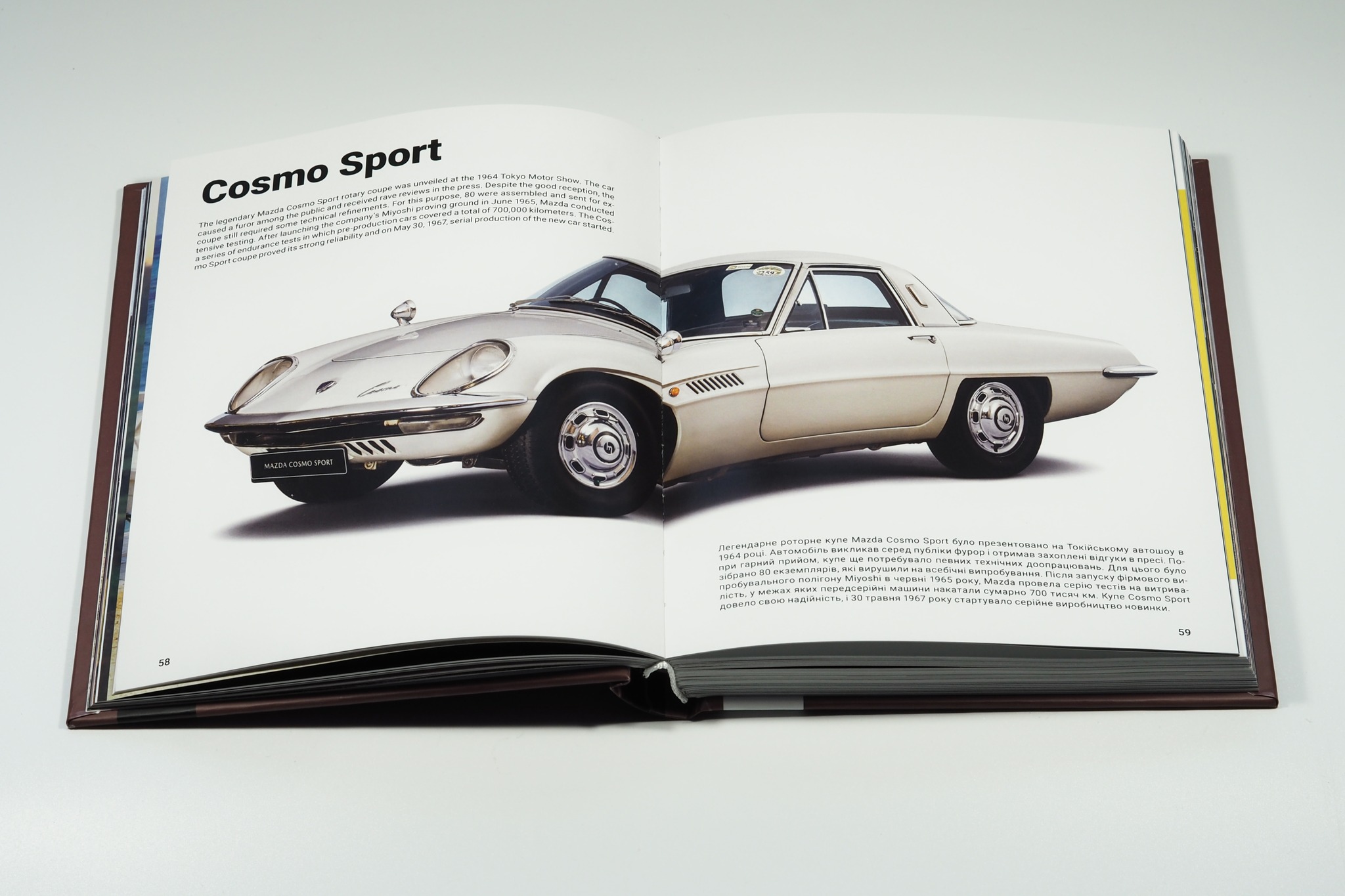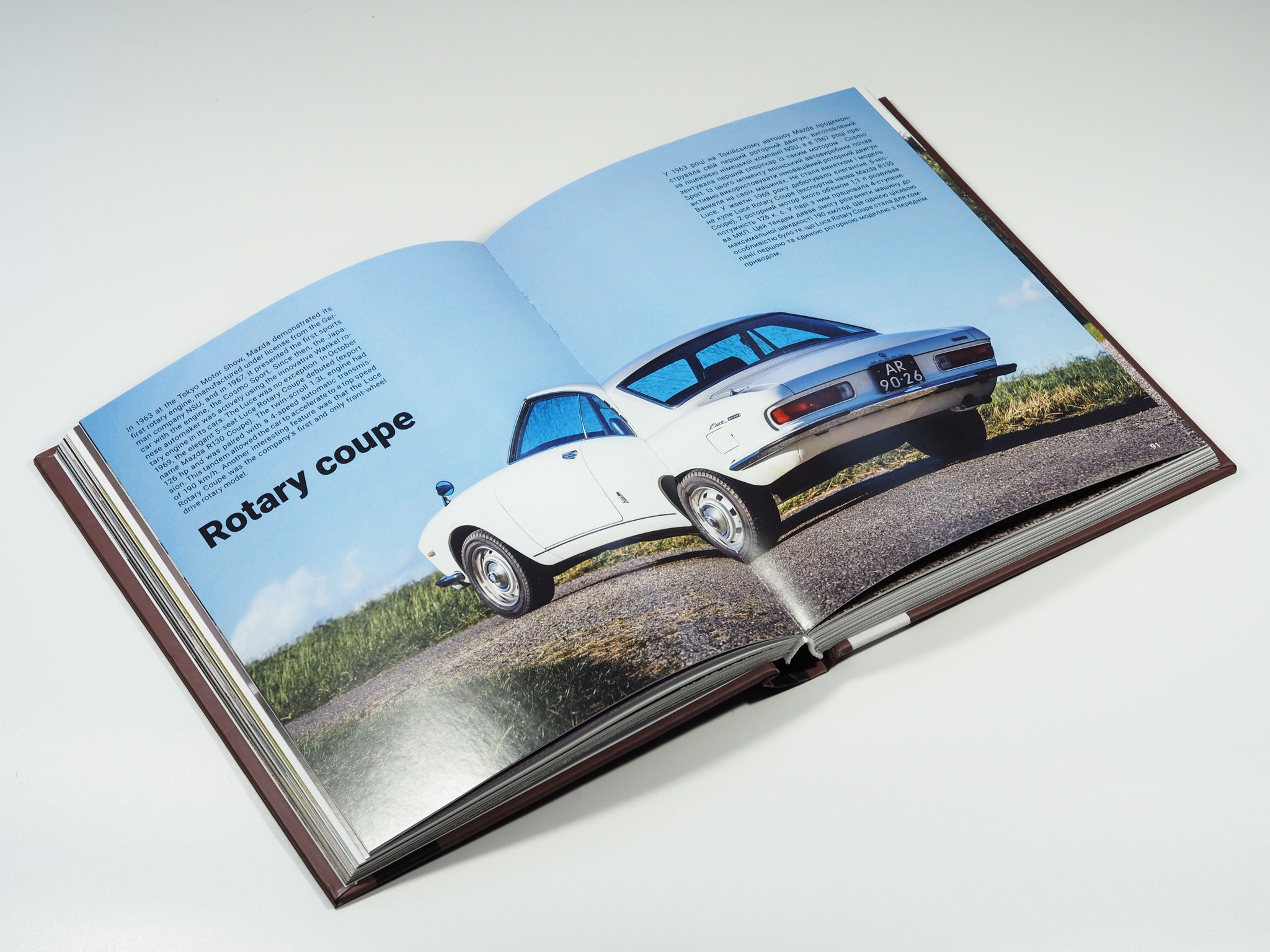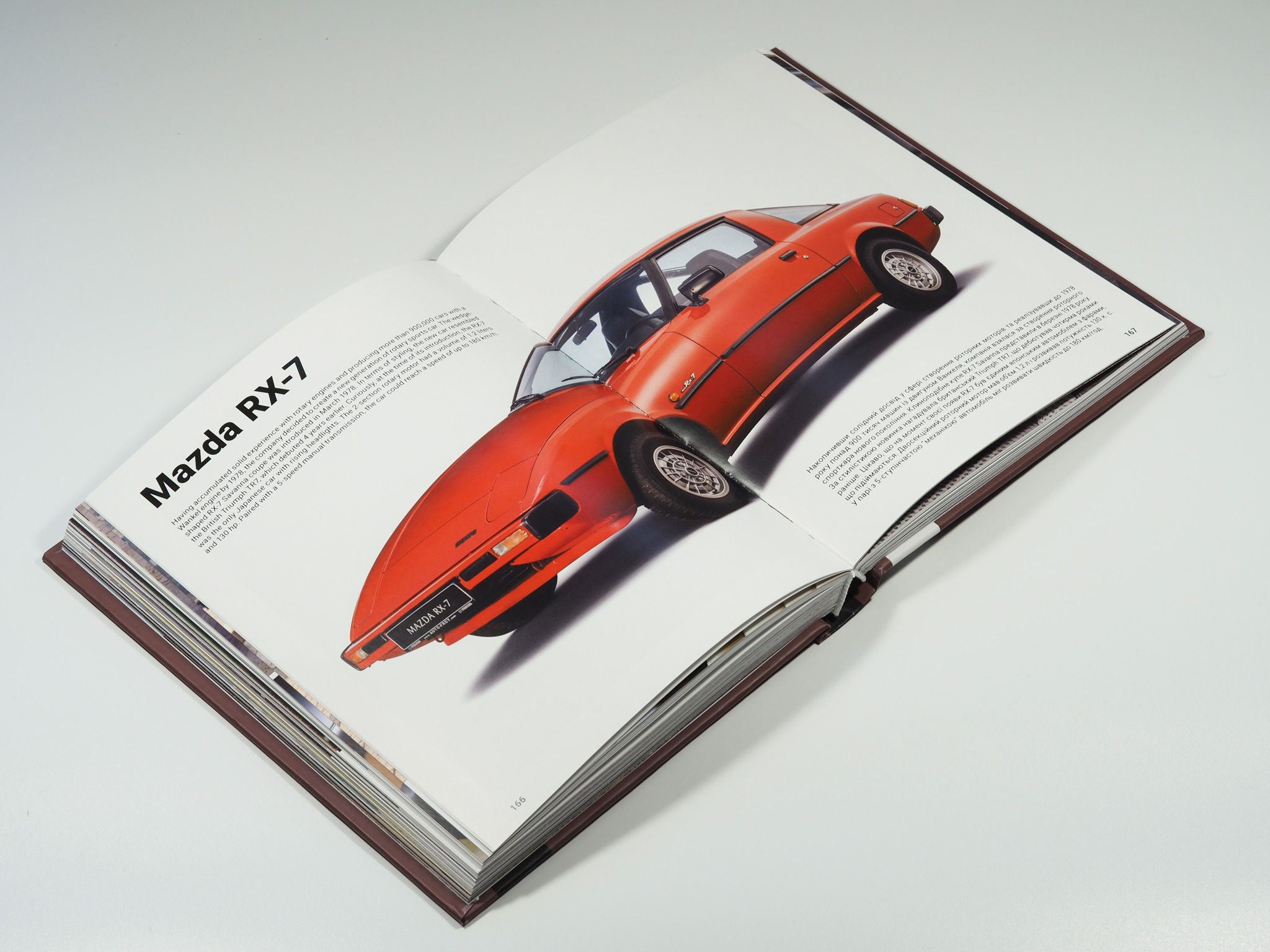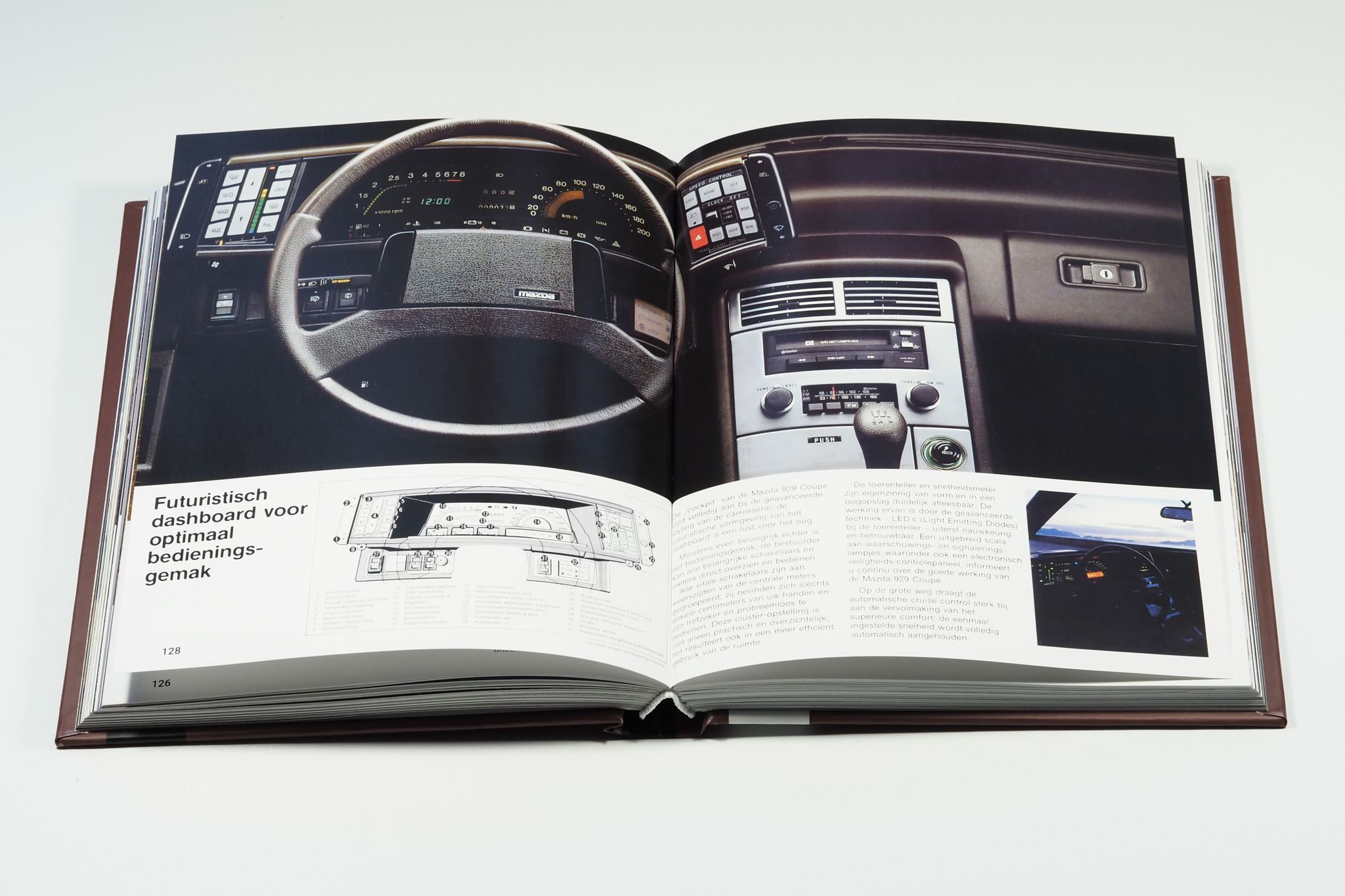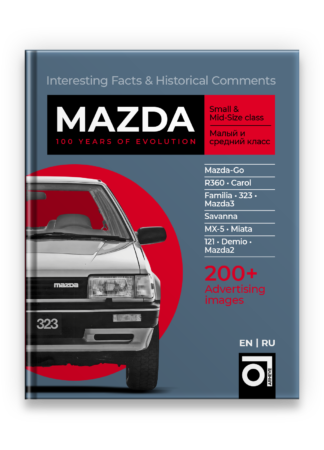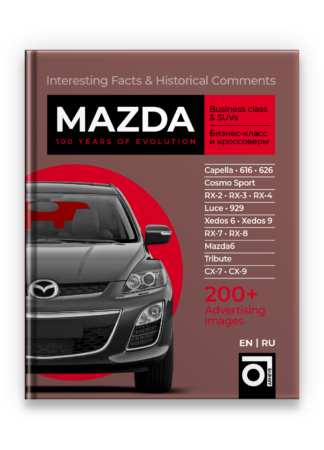Description
Mazda Hardcover book (fragment of the text)
The Japanese company Mazda produced commercial tricycles popular in its homeland since 1931. The success of these products pushed the owner and head of the company, Jujiro Matsuda, to the obvious solution – to create a full-fledged passenger car.
In 1940, a prototype of a new car was developed, a small 2-door 4-passenger sedan. Alas, it was not possible to put this car into serial production due to the outbreak of World War II.
Five years later, in August 1945, American aircraft dropped nuclear bombs on the Japanese cities of Hiroshima (where the Mazda plant was located) and Nagasaki, resulting in massive casualties and destruction.
But despite the horror of the tragedy, four months later, in December 1945, the Mazda plant resumed tricycle production, which made an important contribution to Japan’s revival.
During the first post-war 5-year period, the company was able to ramp up production and offer new models, including the first passenger tricycle with an enclosed 6-passenger body and the first Type-CA 4-wheel pickup.
Simple and unpretentious to maintain, it became the forefather of the company’s new line of commercial models. After the death of Jujiro Matsuda in 1952, his son Tsuneji took over as company president.
He was able to realize his father’s dream of mass producing Mazda cars. The compact model Mazda R360 Coupe was presented in May 1960, and a year later, the pickup truck B360 Truck and station wagon B360 Light van were developed based on it.
Learn more about the history of Mazda’s compact models in the book “Mazda: 100 Years of Evolution. Small and Mid-Size Class.”
By the mid-1960s, the Mazda brand produced a wide range of passenger and commercial models, from small compact cars to vans and trucks. But it still lacked higher-end passenger cars and sports cars….
To fill the niche between the Familia and Luce models, in 1970, the company introduced a new range of Mazda Capella cars with sedan and coupe bodies. Initially, buyers were offered two engines: a 120-hp 2-part 1.2L rotary motor and a 100-hp 1.6L inline four-speed.
The new car quickly became popular and was nicknamed “Kaze no Capella” or “Capella, the Wind” due to its top speed of 190 km/h. In October 1970, the lineup was expanded with a 1.5L (92 hp) piston engine, and in January 1971, the Capella Rotary became the first rotary-powered car to be offered with the REmatic automatic.
On the domestic market, the cars in this range were sold as the Capella/Capella Rotary, and exported as the 616 and RX-2 (with rotary engine).
The 2nd generation Capella model debuted in 1974. Externally, the car began to resemble a larger Luce model, and also slightly increased in length (+50 mm) and height (+10 mm). The wheelbase (2470 mm) did not change.
The new car had different lighting and decor elements, and the interior had a new dashboard. The 1.5L version disappeared from the engine lineup, but there was a 1.8L version with 100 hp. This version was exported as the 618.
Read the continuation of this story in the book.
Other books about history of Mazda:
